When Joel Meyerowitz started taking photographs of the Outer Cape in 1976, it was a break from the 35mm point-and-shoot work he was doing on the streets of New York. Outfitted with an 8-by-10-inch Deardorff large format camera — a cumbersome, antiquated device with attached tripod — Meyerowitz was forced to slow down and look longer, harder, closer.
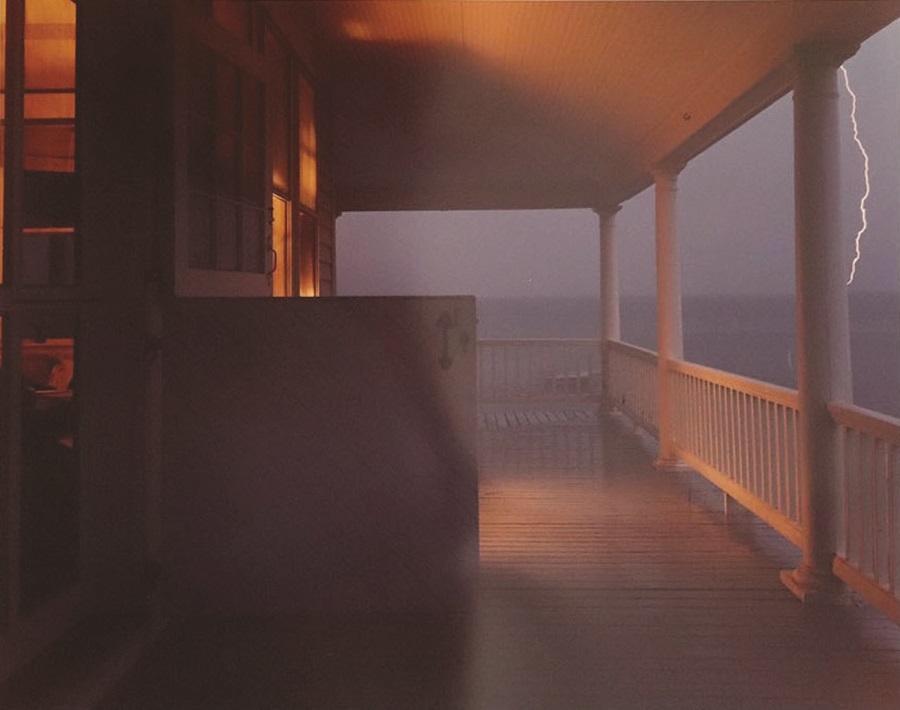
“Joel Meyerowitz Photographs From the Permanent Collection,” on view at the Provincetown Art Association and Museum through May 1, consists of 81 photographs of Provincetown and Truro. It’s curated by PAAM CEO Christine McCarthy from a recent anonymous donation of 200 Meyerowitz photographs.
Meyerowitz, a pioneer in color photography, is best known for his book Cape Light, published in 1979. While the Deardorff camera that he used was in many ways the antithesis of spontaneity, there was one way in which it was not. The image in the camera’s viewfinder was projected upside down, imbuing the work with uncertainty. This might explain why the subjects of Meyerowitz’s photographs seem to possess a rich inner life. While the photographs are composed, there’s an element that’s not.
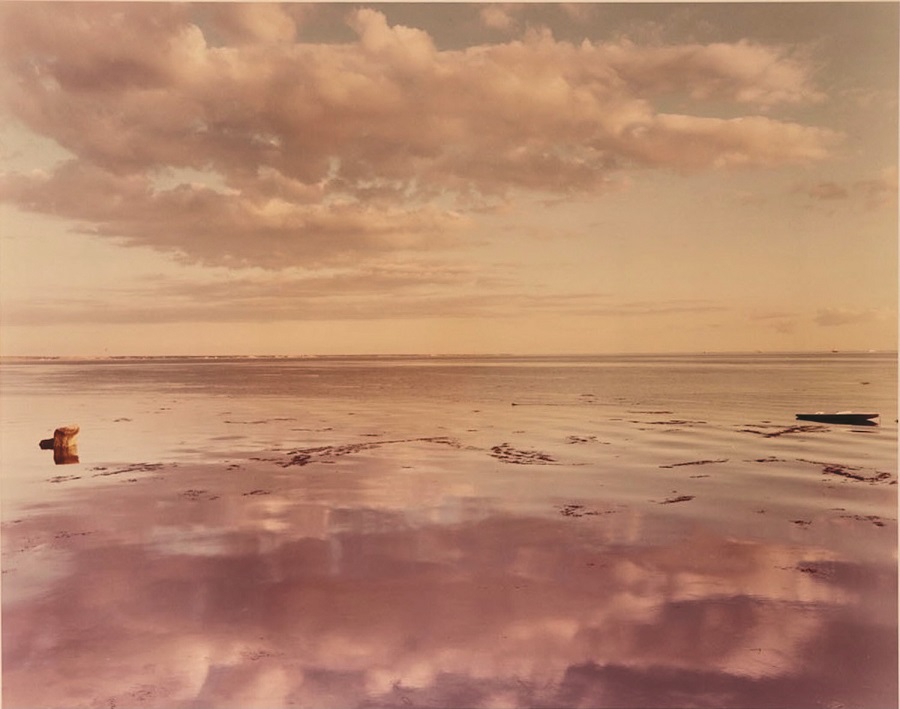
Where the format shines most is in landscapes such as Cape Cod, Massachusetts, 1981, which allow for a greater level of detail, a larger size, and longer exposures. Meyerowitz is particularly adept at capturing the glimmer of twilight over the bay with gradations of soft color. His greatest strength lies in his ability to capture the crystalline moment — expressing not just what that bath of Cape light looks like, but what it feels like.
Meyerowitz writes of being “smitten instantly by a sense of time and light, feeling deliriously open to learning its meaning and dimensions,” in his career retrospective book, Taking My Time. The viewer feels lucky to take part in that delirium.
The show at PAAM is loosely divided by subject — portraits, landscapes, interiors, and architecture. The photographs date from between 1976 and 1989 — long enough ago for the show to take on a historical context: the fashions, cars, and general milieu a generation or two removed.
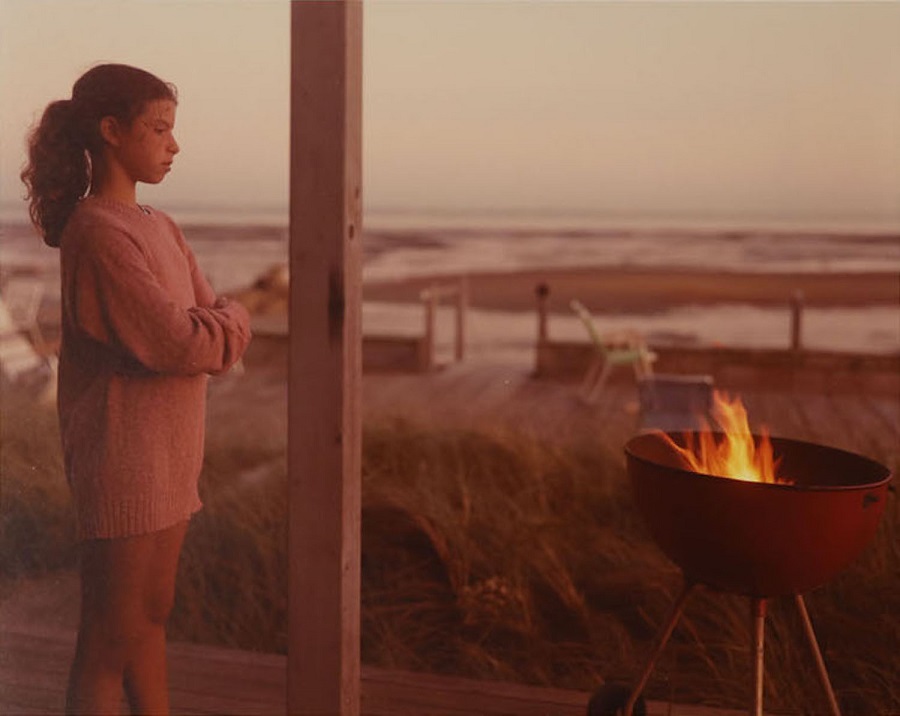
The portraits are striking — a formal/informal conversation between photographer and subject. They feel like the sum of all the moments preceding the shutter click, now trapped in amber. The titles convey an easy familiarity: David, Hayden, Meredith, Vivian, Benjy, Margot, Sarah, Michael, Loraine, Ariel, Manuela; and the couples — Larry and Cynthia, Mike and Nora, Kathleen and Samantha, Margaret and Caroline. As a roll call from the past, it’s quietly moving and affirmative of the Outer Cape as a place where people can fully be themselves.
Then there’s Lisa from 1981, a little out of focus, backlit with red hair ablaze, an inviting half smile and one eye closed. It’s nostalgic without being soft — full of life, presence, and joy. Not only does Meyerowitz document that smile; he makes you want to participate in it.

It’s fun to play trainspotting and guess some of the faces and places: the corner of a façade, a porch from which to watch the sunset, a corridor of open doors. Meyerowitz himself appears in two images — off to one side, or backlit into silhouette, not drawing attention to himself. He doesn’t have to — the locations speak for themselves.
“I went there originally to explore how the Cape’s light seemed to illuminate nature from within,” writes Meyerowitz in his book Provincetown. “What I discovered was the manner in which the light penetrated and exposed people’s mystery, revealing their true identities in such a way that everyone became beautiful.”
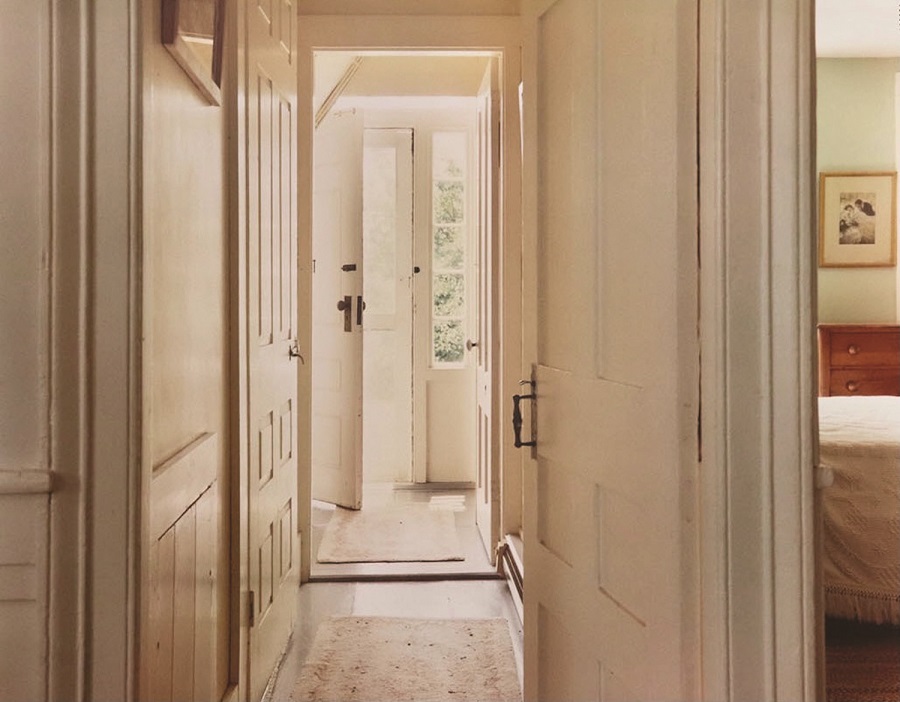
During his time here in the ’70s and ’80s, Meyerowitz knew Norman Mailer, Robert Motherwell, Mary Oliver, Myron Stout, and Stanley Kunitz, all of whom have since left us. There are other ways the town has changed. The economic equation has long since made living in Provincetown out of reach for many. But what’s worth noting, after viewing the show and stepping back out onto the street, is not how much has changed, but how much has stayed the same.
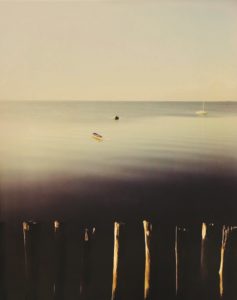
Local Color
The event: “Joel Meyerowitz Photographs From the Permanent Collection”
The time: Thursday to Sunday, noon to 5 p.m.; through May 1
The place: Provincetown Art Association and Museum, 460 Commercial St.
The cost: $12.50 general admission
